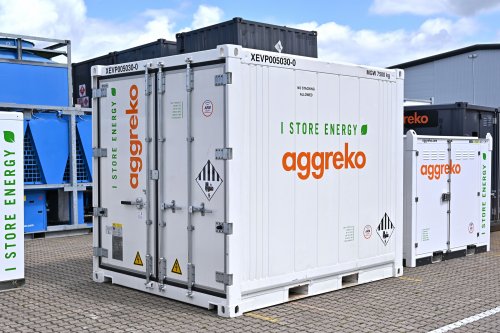Amid reports that doubling energy efficiency by 2030 could cut greenhouse gas emissions by as much as a third, energy specialist Aggreko is highlighting some of the key areas that industry can make immediate efficiency gains.

The Case for Industrial Energy Efficiency , the latest report from the Energy Efficiency Movement (EEM), identifies doubling energy efficiency as industry’s biggest emissions ally this decade, and goes on to map out 10 key energy efficiency actions for industrial leaders.
Within these, the report highlights three fundamental steps to build an efficiency foundation:
1. Audit operations for energy efficiency
2. Right-size industrial assets and processes
3. Bring connectivity to physical assets
With this in mind, David McDonald, Head of Power Generation and Fuels at Aggreko, is offering tangible steps to help businesses put these actions into practice. He said:
“The EEM’s latest report is a welcome development, and chimes with many of the measures that we have long been advocating for industry to adopt.
“The starting point for any business looking to make efficiency gains should be to step back and re-evaluate the energy needs of the site. We need to paint a full picture of the site’s load profile, including the base, low and peak loads. This can then help identify any oversized assets.”
According to David, one of the leading causes of oversized energy set-ups is a lack of knowledge surrounding variable load demands, with sites specifying a large generator to meet the load demands of a small portion of the day, or just to meet start-up requirements. Resultantly, the generator is then left running at lower, less efficient loads for the rest of the day – sometimes as low as 20%.
Here, David is championing flexible load on demand packages and battery energy storage systems (BESS) as possible solutions: “A load on demand package replaces one large generator with multiple smaller units, which automatically scale up or down in accordance with the needs of the site. This ensures that peaks can be met without having to run the generator at a sub-optimal load for the rest of the day, alongside offering the opportunity to incorporate additional resilience if necessary.
“BESS on the other hand, can offer battery-assisted start-up for sites which require a particularly high start-up current, meaning the main generator can be correctly sized in line with the base load requirements. In some cases, this can be used to run extended periods of low loads, or to overcome capacity constraints where the grid connection is limited.”
Post-installation, David believes that remote monitoring can help businesses keep an eye on energy usage to avoid falling foul or poorly sized assets in future. He concluded: “All of our equipment comes fitted with Aggreko Remote Monitoring (ARM) as standard, allowing us to conduct ongoing data analysis. We can then see if the generator is consistently under or overloaded and can then scale the package up or down as necessary.
“For any business looking to make efficiency gains, we highly recommend seeking out the expertise of a specialist partner. We can help you understand the true power demands of your project and set you on the path to more efficient practice.”
For more information on Aggreko’s energy services, CLICK HERE.
www.aggreko.com


